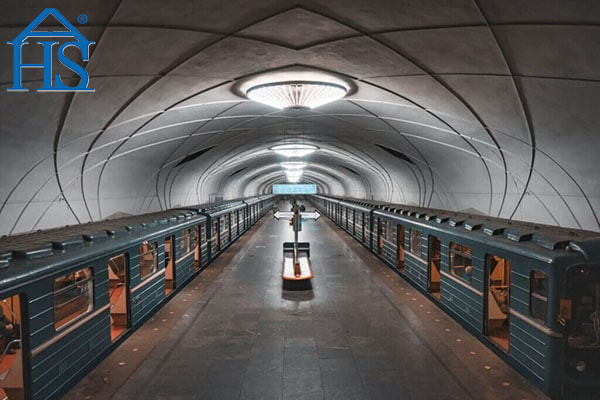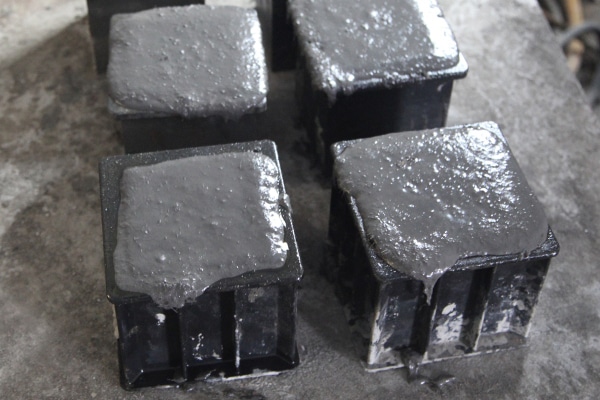Er wordt opgemerkt dat alleen de beste hittebestendige materialen als vuurvaste materialen worden gebruikt. De vuurvaste materialen zijn gemaakt van een mengsel van silicium, aluminium, en calcium. Hun lage thermische geleidbaarheidseigenschappen helpen voorkomen dat warmte uit de oven wordt overgedragen. Dit is belangrijk omdat het ertoe leidt dat er minder energie nodig is om de gewenste temperatuur voor de oven te handhaven.
Basis hun chemische samenstelling, Vuurvaste materialen zetten uit als ze worden blootgesteld aan hitte. Magnesium oxide is by far the most commonly used material and it has a high coefficient of expansion. A typical manufacturing process for refractory materials involves steps like crushing and grinding, followed by forming, firing, and final processing.
The Best Refractory Material Uses for Silica Fume
Silica fume is a by-product of the manufacturing process of silicon. Elemental silicon is produced by heating quartz at extremely high temperatures, the SiO2 (siliciumdioxide) thus produced further oxidizes and condenses to give out silica fume. This article will discuss how refractory material can be made from silica fume.
Refractory materials are used to make metal-casting molds and foundry equipment for metal production. They are also used in high-temperature furnaces for making steel or other metals by melting the castings.
Manufacturers use this material mainly to produce ceramic products. Many types of refractory materials can be created using silica fume, including castable refractories, nonwoven fiber materials, and fluxes that can withstand high temperatures without breaking down over time.
Silica sand is widely used in the production of refractory castables thanks to its ability to provide better packing. It also needs less water than sand while maintaining the same flow characteristics, making it perfect for lower-temperature sintering. Silica sand is also great for facilitating the formation of mullite, which helps make your castables even more durable.
Castables are strong and stop gases, slak, and metal from passing through it. Silica fume castables are strongest, especially in high temperatures & high densities. The more you use silica fume in your recipe, the better it is for your casting project.
Wat is Silica Fume??
Silica rook is essentially the by-product obtained from ferrosilicon alloys and silicon metal production processes. Silica fume is popular for its use in concrete. It’s not just ground-up glass – it has other minerals mixed into it as well.
Silica Fume is light and porous, so it’s easy to process with other materials. Silica fume can be used for insulation or as a filler in rubber products because it helps the material resist heat and moisture.
This versatility and ability to provide a more uniform product makes Silica Fume an ideal additive for manufacturing high-quality refractory castables. This is due to the fact that Silica Fume has a stabilizing effect on the pH, reduces impurities, and improves workability in the final product.
Why Use Silica Fume Instead of Other Refractories?
It is not uncommon for refractories to be used in industrial settings. Echter, not all refractories are created equal. The most commonly used materials are silica sand, brick, cement, and clay. Echter, these materials can take up excessive space and produce harmful gases.
Silica fume is a type of industrial mineral that can be found in abundance – it is an offshoot of the production process for silicon metal. Because it takes up less space than other materials and its production process does not release harmful gases into the environment, silica fume has been becoming more popular as a choice for industrial minerals over time.
Modus Operandi for bonding
Silica fume reacts with water to form silanol groups (Si-OH) on the surface. These groups condense at 80°C to form siloxane bonds (Si−O−Si). This siloxane network that is formed under low temperature at room temperature starts to break down at 250°F.
Verder, silica fume provides high strength under different temperatures. Silica fume helps increase the strength of castable products at low and high temperatures.
Silica fume is so special because it can actually react with Al2O3 at high temperatures to form mullite, thanks to its high activity. This improves the strength and stability of your ordinary refractory castables. Thanks to the combination of its design and materials, the product can have ab cold crushing strength that is more than 100 MPa after being fired at around 1000°C.
Silica Fume Uses in Refractory Materials
Silica Fume is a by-product of the production of Portland cement and has been used in refractory materials for centuries.
Silica fume has a number of applications:
– Vuurvaste materialen: The right proportion of silica fume allows the beehive lining to withstand temperatures as high as 2100°C without distortion or melting. This makes it the most common form of lining for some ovens and furnaces.
– Silica fume is a type of substance that can directly impact how easily it flows. The more silica content the substance has, the better it will flow. The use of low SiO2 content silica fume may cause a higher water content in castables.
– Structural Insulators: Silica fume particles can help with heat insulation, as it is thermally stable and doesn’t melt until 2100°C.
– Keramiek: Silica fume also helps improve the properties of ceramic materials.
– Silica fume is a very reactive material because of its high surface free energy. Om deze reden, silica fume usually collides with other particles and agglomerates easily. In order to improve its reactivity, some types of undensified silica fume are often used as binders as they have a greater dispersion efficiency. Silica fume is an effective secondary reactant in the production of lower-strength, high-density pouring cement.
Effect of the presence of silica fume on castable containing magnesium oxide
The use of silica fume in magnesium oxide castables has been studied extensively. The potential benefits are reduced porosity, verminderde doorlaatbaarheid, reduced gas leakage, reduced shrinkage, better strength at elevated temperatures, and improved thermal properties. This experiment aims to determine how the presence of silica fume affects the properties of castable containing magnesium oxide. A castable is a type of concrete that cures to produce no surface tension.
Silica Fume and Its Effect on Refractory Materials
Silica fume is a by-product of silicon dioxide, ook wel microsilica genoemd. In the manufacturing process, sand is heated to 2,200 graden Celsius in een oven om silicium- en silicadamp te produceren.
Dit silica wordt gebruikt in vuurvaste materialen omdat het een hoog smeltpunt en lage thermische geleidbaarheidseigenschappen heeft. Vuurvaste materialen worden gebruikt in processen zoals staalproductie en glasproductie vanwege hun weerstand tegen hitte en oxidatie.
Om deze reden wordt silicadamp vaak gebruikt bij de productie van baksteen en mortel voor bouwdoeleinden.
De voor- en nadelen van silicadamp in vuurvaste materialen
Silica fume has been used as an additive in refractory materials for over a decade. It is still widely used today, but there are some arguments for the use of silica fume. Silica fume is cheaper than other alternatives, it reduces sulfur dioxide emissions and produces less smoke. Echter, there are cons to using silica fume too. Silica fume can cause pollution when it is created at high temperatures, but this can be mitigated with the use of binders to create a more solid form of the material.
Conclusie: Why Silica Fume is a Good Choice for Refractory Materials
Silica Fume is one of the most popular refractory materials for brick making. It is an important source of silicon dioxide, which forms strong bonds with calcium oxide and aluminum oxide in clay bricks. This makes it a perfect material for use in refractory materials. Aanvullend, it has excellent insulating properties that make it heat resistant and resistant to corrosion. Another key feature is its low density, which means it takes up less space than other refractory materials like finely ground coal or lime mortar. In addition to these benefits, Silica Fume also has a good thermal capacity and thermal conductivity because of the way that silicon dioxide conducts heat energy quickly from one place to another.
To sum it all, Silica Fume has numerous aspects that make it a perfect choice for refractory materials:
• This material is resistant to heat, fire, and shock.
• Met een hoge warmtecapaciteit en lage thermische geleidbaarheid, dit materiaal is de beste keuze voor toepassingen die weerstand tegen hoge hitteniveaus vereisen.
• Het vuurvaste materiaal biedt uitstekende thermische stabiliteit. Het brokkelt niet af onder thermische schokken.
Het is belangrijk om een betrouwbare leverancier van silicadamp te kiezen, zoals Henan Superior Abrasives Import & Export Co., Ltd. Koop vandaag nog onze hoogwaardige silica fume-producten.





